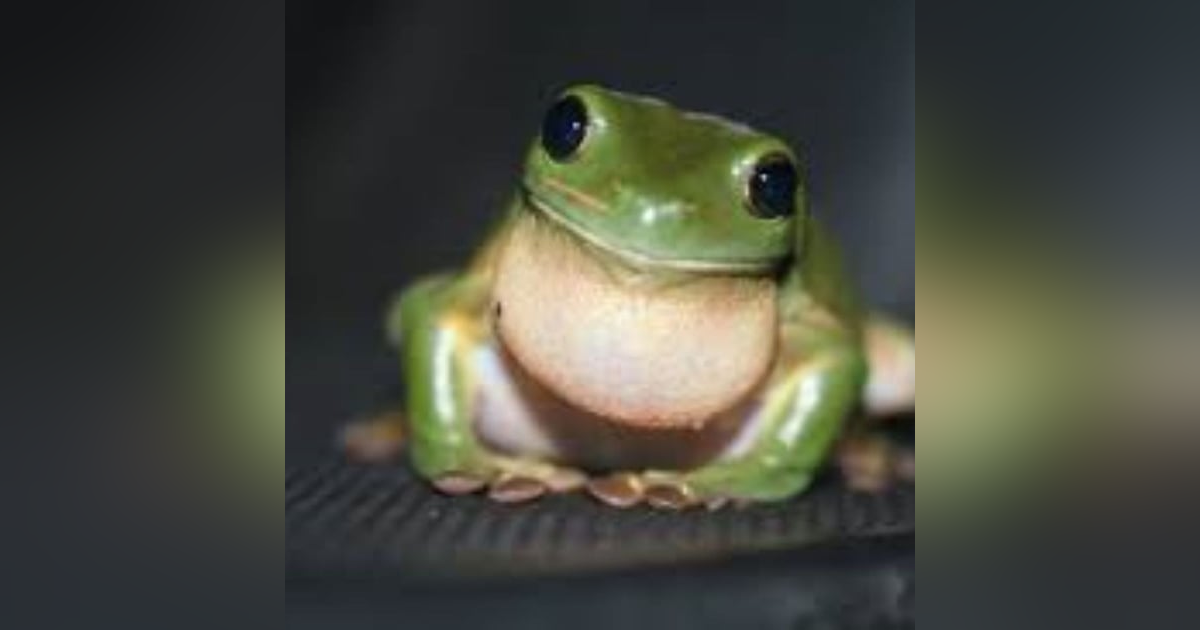July 15, 2023
S6 E7: It's Not Easy Being Green: The Story of Frog Fungal Disease

Hello and welcome to Cause of Death – 100 Seconds to Midnight. Before we get started, I want to welcome my latest Patron to the family. Welcome Elizabeth! I’m so happy to have you here! I thought that since we talked about White Nose Disease in bats...
Hello and welcome to Cause of Death – 100 Seconds to Midnight. Before we get started, I want to welcome my latest Patron to the family. Welcome Elizabeth! I’m so happy to have you here! I thought that since we talked about White Nose Disease in bats last time, we could just hop on over to Frog Fungal Disease this time. There is nothing like going to the river in spring. The frogs are sending their mating calls back and forth. The males are trying to sing their best songs to attract females, and they’re measuring up the other males to see if they really want to battle for the female they’ve chosen. Frogs are both a keystone species and an indicator species in their environments. Keystone species are vital to their environments. If we lose a keystone species, the entire ecosystem will fail. Frogs provide food for several species including birds, fish, monkeys and snakes. As tadpoles, they eat algae which helps regulate blooms and reduce the risk of algal contamination. As they metamorphose from tadpoles into frogs, they become more carnivorous, and this means that they eat a lot of bugs. They can eat up to 100 insects in a day. O.K., so not quite as impressive as the bat, but still, that’s a lot of bugs. The larger the frog, the larger the prey. Some species can eat animals as big as snakes and birds. So, maybe you didn’t want to hear that part, but it does show that frogs are an important part of the food chain as predator and prey. Frogs are also an indicator species. If you listen to the Greed and Avarice episode on chemical spills and the environment, I talked a bit about researchers walking the stream where the train derailment occurred in Ohio. They were looking for dead fish and frogs. You can reach me on the website at http://www.causeofdeath100secs.net or you can email me at mailto:Jackie@causeofdeath100secs.net. My Link Tree can be found at: https://linktr.ee/CauseofDeathpod You can support Cause of Death here: Subscribe on Apple Subscriptions Patreon: https://www.Patreon.com/JackieMoranty Ko-Fi: https://www.ko-fi.com/causeofdeathluckycharmsunplugg Merch can be found at: https://www.teepublic.com/user/causeofdeathluckycharmsunplugged Frog Fungal Disease Show Notes: https://www.cell.com/trends/ecology-evolution/fulltext/S0169-5347(09)00241-9 https://www.science.org/doi/abs/10.1126/science.1176765 https://www.sciencedirect.com/science/article/abs/pii/S1286457910002480 https://journals.plos.org/plosone/article?id=10.1371/journal.pone.0062146 https://www.int-res.com/abstracts/dao/v77/n2/p113-118 https://www.dcceew.gov.au/sites/default/files/documents/c-disease_1.pdf https://www.pnas.org/doi/10.1073/pnas.95.15.9031 https://www.amphibianark.org/the-crisis/chytrid-fungus/ https://savethefrogs.com/why-frogs/ https://auduboninternational.org/why-we-should-love-frogs-and-how-to-encourage-them-on-your-property/ https://phys.org/news/2017-05-frogs.html https://uspest.com/blog/know-frogs-important-ecosystem/ https://www.citizen-times.com/story/life/family/2020/04/08/nature-center-notes-frogs-key-wncs-ecosystem/2883862001/ https://www.pubs.ext.vt.edu/content/dam/pubs_ext_vt_edu/420/420-527/CNRE-87.pdf Kilpatrick, A. Marm, et al. “The Ecology and Impact of Chytridiomycosis: An Emerging Disease of Amphibians.” Trends in Ecology & Evolution, vol. 25, no. 2, Feb. 2010, pp. 109–118, https://doi.org/10.1016/j.tree.2009.07.011. Voyles, J., et al. “Pathogenesis of Chytridiomycosis, a Cause of Catastrophic Amphibian Declines.” Science, vol. 326, no. 5952, 22 Oct. 2009, pp. 582–585, https://doi.org/10.1126/science.1176765. https://www.sciencedirect.com/topics/biochemistry-genetics-and-molecular-biology/batrachochytrium https://www.frontiersin.org/articles/10.3389/fmicb.2017.00290/full Global Invasive Species Database (2023) Species profile: Batrachochytrium dendrobatidis. Downloaded from http://www.iucngisd.org/gisd/species.php?sc=123 on 08-07-2023. https://cisr.ucr.edu/invasive-species/chytrid-fungus...

















